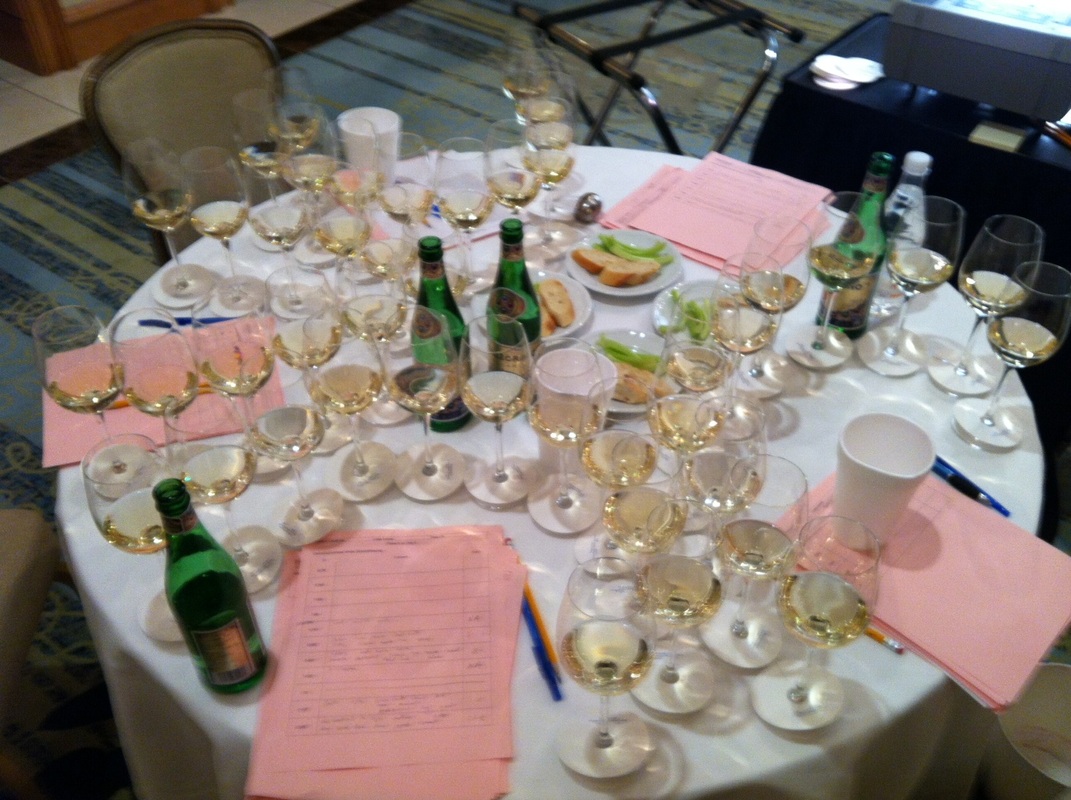n
Such was the case last weekend in Dallas where I helped judge the Dallas Morning News Competition at the Four Seasons Las Colinas Resort, a gorgeous property. Fortunately, the wine competition gods smiled on me this time and I was able to chair a great panel consisting of friends and fellow MS’ Wayne Belding and Laura Williamson. My former editor at Fine Cooking Magazine, and dear friend, Amy Albert rounded out the team.
Our mission on day one was to work through 115 wines from Sonoma County. We started with a flight of Pinots (several very good ones) and then Merlots (also several good wines) before moving on to smaller flights of Cabernet, Zinfandel, Syrah, and finally Cab blends. It was somewhere between Barstow and the end of the Cabernets that our team became concerned for our combined olfactory health. Many of the wines seemed to have the vinous hygiene of a high school 4-H Club. We dubbed one remarkably bretty and tannic Cabernet the “angry cow.” And it more than delivered. After lunch, day one concluded with two flights of Chardonnays, all pretty good, none stellar, and most almost exactly alike. Visions of Hello Kitty, Britney Spears, and an endless landscape of microwave popcorn danced in my head.
What makes a good wine, a medal wine, you might ask? Easy answer: it should be clean and well-made; it should smell and taste like the grape variety it’s made from; and above all, it should be balanced, appealing, and drinkable. Score one in each of those columns and your wine gets a medal. Really do a good job and the wine will get a gold medal, or at least a silver. Trust me, when we came across one of these top wines, the quality is so obvious to everyone on the team it’s like a blinding light being shined in a dark space.
Day two dawned bright and sunny despite the copious amount of Negronis and Fernet Branca consumed by some of the judges the night before. It was Riesling day, something our team had talked about all along. After tasting through an initial flight of Greek wines (some excellent reds), our task of the day was to work through the better part of 90 Rieslings from Europe, Australia, and the U.S. We were, needless to say, dangerously excited. The first flight of German wines yielded two outstanding entries that garnered top honors. From there, a very good flight of Alsace Rieslings followed by two flights of Australian Rieslings from Clare and Eden Valley. The latter turned out to be the best grouping of the two days. Several gold medals were awarded along with more than a few silver medals. Although Aussie Riesling is well known among the sommelier community, it’s not exactly a household name. It’s one of the most concentrated, intense, and mineral-driven white wines made anywhere and definitely one of the paradigms for the Riesling grape. Monikers such as “liquid light saber” or “liquid piano wire” come to mind. Needless to say, the wines are also remarkably age worthy.
We took a break after the Aussie wines and then dug into multiple flights of California, Washington, and American appellation Rieslings. It was here that everything pretty much went south. Although there were a few good wines here and there, what followed was a primer in the misuse of SO2 and acidulation. Many of the wines showed copious quantities of sulfur and tartaric, others were oxidized, and still others were simply flawed with sulfide or mercaptan issues. It was here, faithful reader, where we earned our keep–where the rubber met the road. Oddly enough, some of the wines actually did smell like rubber–but that’s another story. In the end, we handed in our paperwork, took a team photo, and finished up with lunch. It was a great two days; I thought our team did an excellent job of working together to find the best wines presented. And it was almost too much fun. Cheers!
nn
